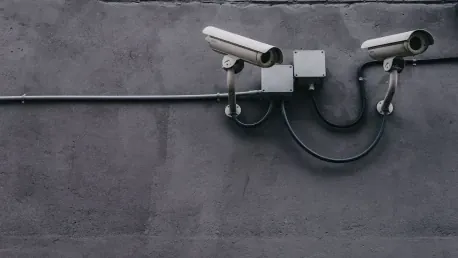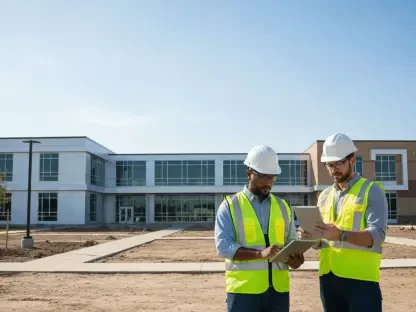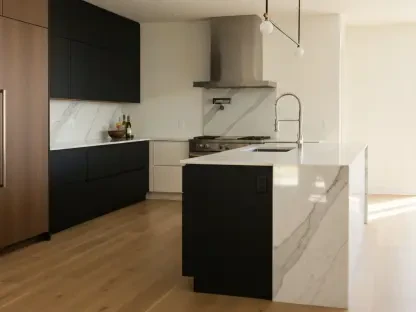Starting university is an exciting milestone for young adults, but it also brings a period that can be fraught with vulnerability. Students often arrive at their accommodations with valuable technology and a newfound sense of independence, making them prime targets for theft. Recent data indicates that a third of UK students have experienced or know someone who has experienced a break-in at their student housing within the past year. This stark statistic underscores the pressing need for elevated security standards in purpose-built student accommodation (PBSA), leading experts to discuss the importance of proactive measures and technological solutions to protect student well-being.
The Importance of Early Supply Chain Engagement
One of the central themes in enhancing PBSA security is the critical importance of early supply chain engagement. Experts unanimously agree that defining security parameters from the outset of a project is not only fundamental but also pivotal for ongoing student safety. Richard McGuinness from TP Bennett emphasized that security should be considered within the broader scope of student well-being. According to McGuinness, creating a safe environment starts with understanding local risks and engaging with architectural liaison officers early in the planning process. This proactive approach helps to align security measures with the local context and potential threats.
Ben Penson from Zoo Hardware and Rob Pace from JELD-WEN UK echoed this sentiment, stressing that early engagement helps in setting clear standards and ensuring the selection of compliant products. Penson highlighted the importance of specifying locking mechanisms early to avoid invalidating fire safety certifications later on. This consideration is crucial, as delayed decisions on such vital aspects can lead to significant problems during installation and beyond. Samy Dwek of NSP Europe shared experiences where late decisions on door-locking systems not only disrupted installations but also compromised overall security measures. By involving key stakeholders, including suppliers and security specialists, from the beginning, projects can avoid such pitfalls and ensure that all components work cohesively to maintain high security standards.
Building Location and User Behavior
Security planning must not only focus on the interior aspects of student accommodations but must also consider the building’s location and user behavior. Sam Scott from Fresh explained that PBSAs often serve as catalysts for local regeneration, which means security strategies must account for how students travel to and from the building, primarily using public transport. Following the student’s journey through various access points to their accommodation can help design effective security layers, such as controlled access doors and passive surveillance at reception desks. These measures ensure that students feel secure not just inside their buildings but throughout their entire commute.
External threats pose a significant concern, with tailgaters and unauthorized individuals often being the main culprits of theft rather than fellow students. Richard McGuinness suggested creating defensible spaces where residents are shielded from public pathways, thereby reducing exposure to potential threats. Such designs can significantly minimize opportunities for unauthorized access. Bringing cycle storage closer to building entrances and making them visible from within can deter theft and enhance usability while simultaneously promoting a sense of security among residents. These changes in the physical environment work in tandem with strategic surveillance to create a comprehensive security solution.
Community Engagement and Safety
Community engagement emerged as another pivotal element in enhancing PBSA security, playing a crucial role in identifying and addressing potential vulnerabilities. Oliver Bailes from JTP recalled a project where local engagement revealed security blind spots that might have otherwise been overlooked. He stressed that building positive relationships with local communities can help dispel hostility and foster a safer environment for everyone involved. Engaging the community can also provide valuable insights into local crime trends and potential security risks, allowing for more informed and effective strategies.
Similarly, providing educational resources such as self-defense classes and encouraging the use of reporting apps can enhance awareness and safety among students. Understanding the behavior patterns of students and engaging with the local community can inform more effective security strategies that not only improve overall safety but help to build a sense of community and trust between students and local residents. Such measures encourage students to be proactive about their safety and foster a collaborative approach to security, where everyone is invested in maintaining a safe environment.
Technological Solutions and Continuous Improvement
The integration of technological solutions and continuous improvement is crucial for maintaining high-security standards in student accommodations. Ben Penson advocated for trade associations to drive best practices in electronic product standards and ongoing assessments to keep up with evolving threats. He argued that technology should not only be implemented but also regularly reviewed and updated to ensure efficacy. Jon Cole from Police Crime Prevention Initiatives highlighted the use of security overlays in the RIBA Plan of Work to guide timely decision-making and improve security outcomes across PBSA projects. This structured approach to implementation ensures that security considerations are an integral part of the planning and development process.
Regularly updating security measures to adapt to technological advancements and new threats is essential. This commitment to continuous improvement includes revisiting completed projects to assess and incorporate lessons learned, ensuring that security measures remain effective and up-to-date. By adopting a proactive approach to technology and innovation, the sector can stay ahead of potential security risks and safeguard student well-being. This continuous review and improvement framework is fundamental to maintaining a safe living environment for students.
Fire Safety and Product Certification
Fire safety and product certification are critical components of PBSA security that cannot be overlooked. New regulations under the Building Safety Act have created tension among stakeholders, with instances of incompatible door fittings causing compliance issues. Industry experts called for third-party certification of fire doors and locks to ensure efficacy, emphasizing that proper certification processes are essential for meeting safety standards. The Grenfell Tower tragedy serves as a tragic reminder of the consequences of inadequate safety measures, underscoring the importance of rigorous compliance and certification processes.
The concept of the “golden thread” has been highlighted, emphasizing the need for seamless information sharing across all stages of higher-risk building (HRB) delivery. This approach helps maintain high-security standards by ensuring that all safety measures are integrated and effective from design through to construction and occupancy. It calls for a transparent and collaborative effort among all stakeholders, ensuring that every aspect of safety and security is meticulously documented and adhered to throughout the lifecycle of a building.
Cost Considerations and Value
Cost considerations were also discussed, with experts pointing out that proper certification and compliance processes, while expensive, offer significant value in terms of ensuring safety and security. Hauser underscored the correlation between increased security and revenue, as parents naturally prefer to send their children to safer accommodations. Investing in high-quality security measures not only protects students but also enhances the reputation of the accommodation provider. This added security can lead to higher occupancy rates and increased revenue, making it a worthwhile investment for property developers and managers.
Ultimately, the cost of implementing robust security measures is offset by the value they provide in terms of student safety and peace of mind for both students and their families. It was concluded that by focusing on early engagement, clear specifications, and continuous improvement, the sector can create safer environments for students and mitigate security risks effectively. The benefits of a well-secured accommodation extend beyond immediate safety, fostering a sense of security and community that enhances the overall living and learning experience for students.
Conclusion
Starting university is an exciting milestone for young adults, bringing new opportunities and experiences. However, this period is also one of significant vulnerability. Students often arrive at their new accommodations with valuable technology and a newfound sense of independence, which unfortunately makes them prime targets for theft. According to recent statistics, about a third of UK students have either experienced a break-in at their student housing or know someone who has in the past year. These alarming numbers highlight the urgent need for improved security standards in purpose-built student accommodation (PBSA).
Experts are increasingly discussing the importance of proactive measures and innovative technological solutions to enhance the safety and well-being of students. Security cameras, controlled access points, and personal safety apps are just a few examples of how technology can play a pivotal role in this regard. Universities and housing providers must prioritize these security enhancements to create safer living environments for students. Such measures not only protect students’ physical belongings but also offer peace of mind, allowing them to focus more on their academic and social lives. Investing in comprehensive security strategies is, therefore, essential for fostering a secure and supportive environment for students during their university years.









